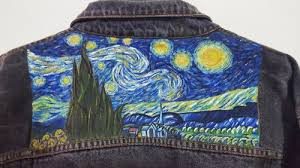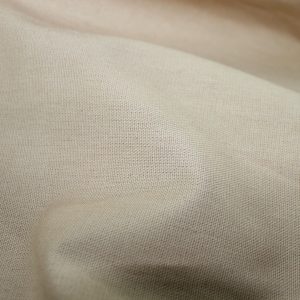Tips For Painting on Fabrics
While we tend to focus on the things that you can do to manipulate fabrics, there are a number of people who may prefer to paint patterns onto their pieces instead of sewing them in.
Luckily, this is possible with a number of different fabrics, though you will usually need to be fairly careful when doing it. Here we look at a few helpful tips that should ensure you get it right.
The Fabric
There are few fabrics that you can paint on with good effect, but they are out there. The best is probably cotton, so if you are just getting started it is worth searching out 100% cotton fabric to experiment with. Best of all, this is a fairly inexpensive fabric to use, so you should have a little more room to make the odd mistake.
Good results can also be achieved with rayon and silk, though these are both a little more difficult so it is worth trying your techniques on a sample square before moving on to the main piece.
Tighter Fabrics
In addition to choosing the right type of fabric, you also need to keep the weave in mind. Looser fabrics tend to be harder to paint on, as they allow paint to seep through, thus ruining the pattern. As such, you should look for something that has been finely woven, to ensure your patterns maintain a vivid colour, instead of seeping through.

Wrinkles
Trying to paint on wrinkled fabric can be very difficult, as even a small crease will lead to the pattern becoming distorted. As such, before you start painting you should spend a little bit of time ironing the fabric out, making sure that the area you wish to paint is completely flat. It is also a good idea to be careful about the surface you are using, to make sure you don’t hit unexpected bumps.
Setting The Pattern
You can use your iron again in order to help set the paint into the fabric. When you have finished painting, leave the fabric for 24 hours in order to let the paint dry. Then, spend a few minutes ironing the opposite side of the fabric, to ensure you don’t end up getting paint on your iron during the process.

Prewash
It is a good idea to prewash your fabrics before you start painting on them. The reason for this is that the wash should get rid of any additional size that the manufacturer has added. Failing to do so could lead to the fabric “shrinking” in the wash, which means the pattern becomes distorted. Of course, make sure the fabric is completely dry again before you start painting.
Protection
If you are painting a piece that has already been completed, like a t-shirt, and only want the pattern on one side, be sure to place some newspaper or a towel between the side that you want to paint and the one you want to keep clear. This will ensure no paint bleeds over onto the clear side.

Fabric UK is your destination for all types of fabric. Whether you’re searching for fabric samples or purchasing by the meter, we make it easy to find exactly what you need.
You can order: Samples, Wholesale, Fabric by the meter
Fill Form for Free fabric samplesSimply visit our website at fabricuk.com or call us directly at 0121 359 2349 for any questions or inquiries.
Visit Our Fabric Showroom
Feel free to visit our fabric showroom anytime – no appointment is necessary!
KBT LTD, Carlton Business Centre, 132 Saltley Road, Birmingham, B7 4TH, United Kingdom
Email Us:
You can reach us at: info@fabricuk.com
Showroom Hours:
- Monday – Friday: 9:30 am – 6:00 pm
- Saturday: 10:00 am – 5:00 pm


















